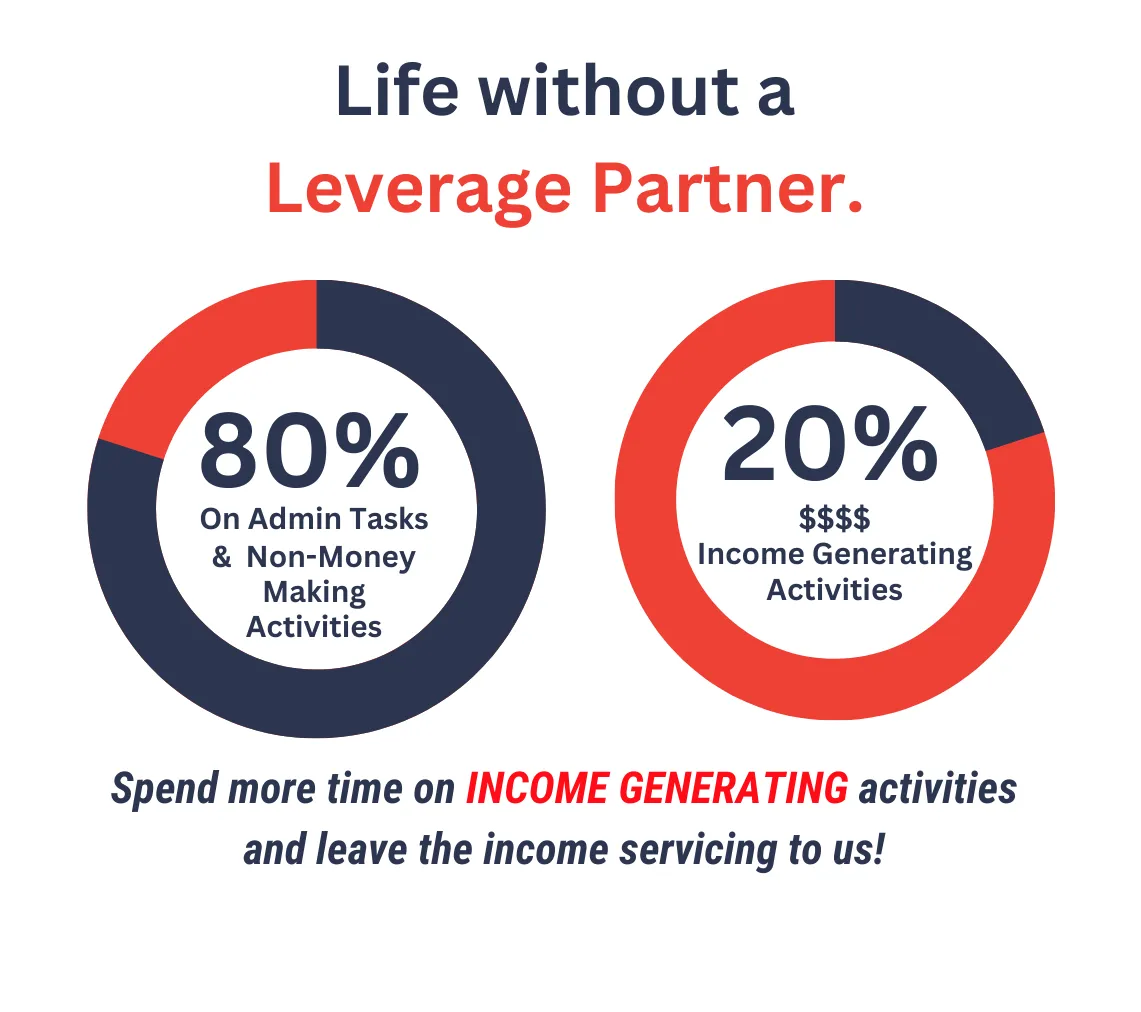WE SAVE
BUSINESS OWNERS
TIME AND MONEY!
YOU STAY FOCUSED ON LEAD GENERATING
& LEAVE THE LEAD SERVICING TO US!
WE GIVE YOU
YOUR LIFE BACK
THROUGH THE
POWER OF LEVERAGE.
FEEL LIKE YOU'RE DROWNING?
WE CAN HELP! Your Realty Leverage, Inc. understands what it takes to be a successful business owner. We offer agents, teams, and brokerages every piece of LEVERAGE they need to build a successful career in Real Estate. Whether it's Transaction and Listing Management, Database Management, Marketing, Hiring and Training, or Coaching, we help our clients maximize their potential through leverage so they can LIVE EXTRAORDINARY LIVES!

TRANSACTION & LISTING MANAGEMENT
We do all the heavy lifting in your listings & transactions!

MARKETING
& ADMIN
SUPPORT
Need Help but you are unable to afford an assistant?

RECRUITING, HIRING
& TALENT ACQUISITION
We ensure you follow a proven model to make the right hire!

MARKET CENTER & BROKERAGE
SUPPORT
Bring Leverage to your Agents and share in the revenue!

COACHING,
TRAINING, & CONSULTING
Protect your human capital, your number one asset.
READY FOR HELP?
Complete the form for a complimentary call with Brindley to identify what you need!

73%
Increase in profitability when you hire a Leverage Coach
25+
Hours Saved per Agent per Transaction
101
Years of Combined Experience on our Team
Listing & Transaction Management
Coaching, Training & Consulting
Recruiting & Hiring
Market Center & Brokerage Support
What Our Clients Are Saying...

GEORGIA ALPIZAR
Regional Director
North Florida Region

“Your Realty Leverage, Inc. demonstrated excellent efficiency and expertise throughout the hiring process, securing talent to fill several team leader roles for us across our region. YRL's commitment to understanding our specific needs and then delivering quality candidates truly helped us in building a successful team.”

NATE DICKEY
Operating Partner
KWCLM
Regional Director
New England

“Partnering with Your Realty Leverage, Inc. has been a huge asset to our agents! Their impactful services proved invaluable for agents seeking both efficiency and financial growth. YRL helped our agents reclaim time and elevate their businesses, which in turn helped to grow our overall profit share for the Market Center.”

DAVID McCARTHY
Operating Partner
Boston Metro, Chestnut Hill, & Metrowest

“Working with Your Realty Leverage, Inc. has been a very positive experience for our agents that has afforded them more time to focus on lead generating activities. YRL’s efficiency in transactions and listings has allowed us to recruit and retain to a leverage based model. Our agents feel supported and everyone feels like their winning!.”
We Can Get Further Faster TOGETHER.
EXPERIENCED. PROVEN. NATIONWIDE.
We will help you discover exactly what you need.
Delegate. Elevate. Thrive.
813.261.6252 | [email protected] | www.yourrealtyleverage.com | www.ineedleverage.com
© YOUR REALTY LEVERAGE, INC. - All rights reserved.
